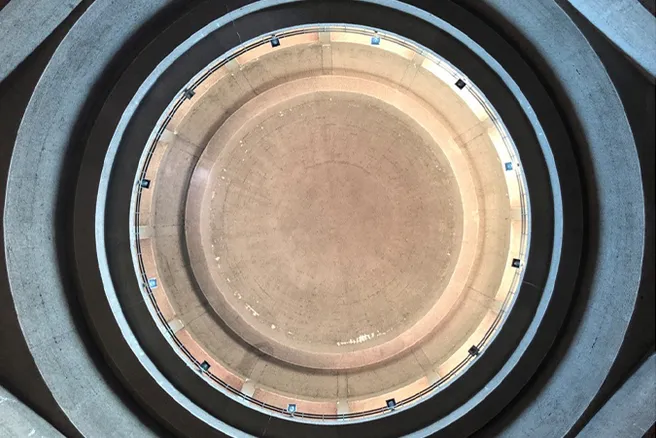Invitation to the final review of Bachelor Project "The Beauty of Architectural Surfaces" at the Chair of Conservation-Restoration, Art Technology and Conservation Science:
The BA Project The Beauty of Architectural Surfaces explores historical surfaces and their characteristic manufacturing processes, along with their failures occurrences, aging phenomena, patina of time all the while understanding the effects of restorations and, at times, their undesired outcomes.
Students are, then, encouraged to revisit the past for reinventing the future by developing their own architectural languages based on a deep understanding of materials and their practical manufacturing processes of surfaces while redeveloping the ritual spaces of the Church of Sacred Heart of Christ the King in Rome by Marcello Piacentini. This included include the (i.) Cript, (ii.) the confessio and (iii.) the complection of the main facade, (iv.) as well as the peristyle around the choir (v.) the inner staircases and the bell towers and (vi.) the roof terraces.
A particular deal of attention was paid to the reworking and manipulation of historical surfaces following World War II. The study will concentrate on brick works, exposed concrete surfaces and stone masonry finishing as well as roof coating.
“It is well known that ecclesiastical constructions [...] from a planimetric point of view can all be reduced to two fundamental schemes: the Latin cross and the Greek one. [...] there is a great difference between these two basic types […] the emotional feeling that the view of their interiors gives to those who enter these churches and walk down the nave. [...] in the first case the motif of the dome appears too late, in the second case too early, and the imagination of the person entering the church undergoes an excessively sudden impression. When designing the new church, I tried to find an intermediate solution between the two [...] so that the visitor can embrace the entire triumphal space of the dome from the entrance with a view of about 30 degrees - in other words, this has not be too steeply inclined.”
Marcello Piacentini, Il Tempio Votivo Internazionale della Pace dedicato al Sacro Cuore di Cristo Re, in «Architettura», a. XII, n. IX, settembre 1934, pp. 513-531 (in Italian).
Guest critic:
Prof. Arch. Giovanni Carbonara at University of Roma, La Sapienza
Carbonara is emeritus Director (1995 – 2013) of the Post-Graduate School for the Study and Restoration of Monuments at La Sapienza University of Rome. Since 1980, he is full Professor in Conservation-Restoration of heritage buildings and he is known for his Theory of Restoration referred to us Scuola Romana del Restauro Architettonico.
He has been engaged with ICCROM for nearly 50 years. He has collaborated on teaching and training activities as well as contributing to conferences and publications.
He has supervised, either directly or as a consultant, numerous restoration works, including the Arch of Augustus and the Roman walls of Fano (Pesaro and Urbino), the early Christian church of S. Stefano Rotondo in Rome, the facades of Palazzo Montecitorio (17th-19th century) and other site of the Chamber of Deputies in Rome (Santa Maria sopra Minerva complex, facades facing Via del Seminario and Piazza San Macuto). He is the author of numerous studies on the history of architecture and restoration.
In 1993, he was appointed Academic of the Pontifical Academy of Fine Arts and Lettere dei Virtuosi at the Pantheon. He was awarded several prizes all around. Especially, the ICCROM Award (year, 2017)
When:
15.03.2022, 10h
Where:
Online
Zoom
Meeting-ID: 882 4404 8337
Password: 215271
